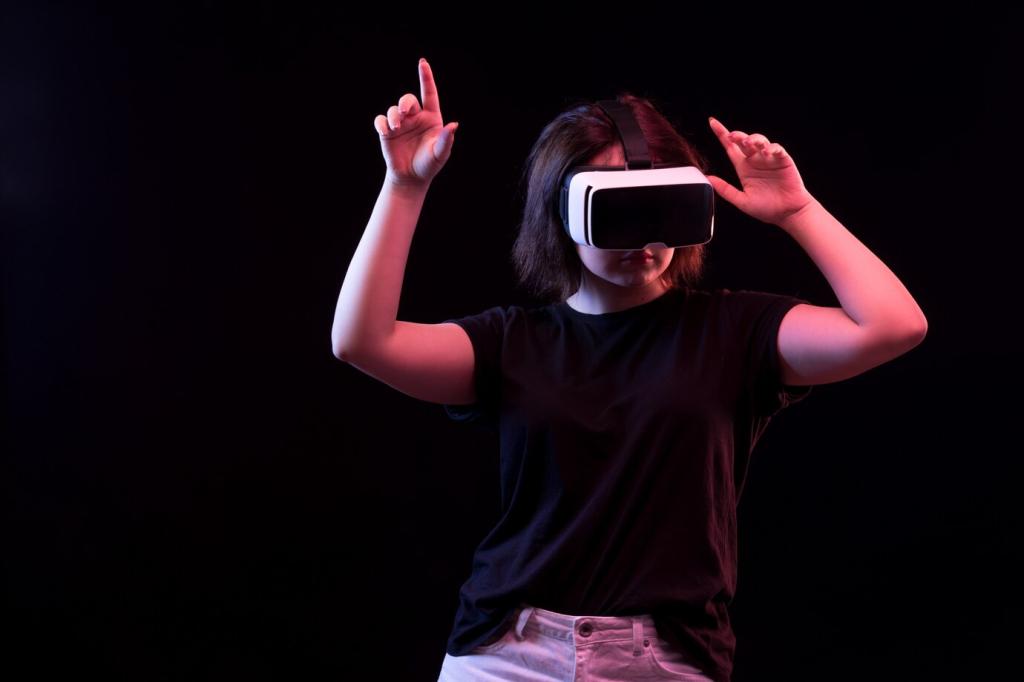Exploring the Psychological Benefits of Virtual Reality Therapy
Virtual Reality Therapy (VRT) is an innovative approach at the crossroads of technology and mental health care. By immersing individuals in digital environments carefully crafted to address psychological challenges, VRT offers opportunities to enhance therapeutic outcomes, overcome barriers, and personalize treatment on an unprecedented scale. This comprehensive exploration examines how virtual reality is revolutionizing psychological wellbeing, supporting individuals in overcoming trauma, reducing anxiety and stress, and empowering lasting behavioral change.
The Science Behind Virtual Reality Therapy
Mechanisms of Immersion
Immersion is the keystone of VRT, engaging multiple senses to simulate reality and facilitate psychological change. When individuals are fully present in a virtual world, their brain responds as though the experience is genuine, enabling deep-seated emotional and behavioral modifications. This potent sense of presence allows therapists to guide clients through realistic, yet adjustable, scenarios, supporting cognitive and emotional transformation. Therapeutic immersion can support exposure, skill-building, and retrieval of suppressed emotions in a safe, structured manner.
Neural Plasticity in Controlled Environments
VRT leverages the brain’s plasticity—the capacity to rewire itself in response to experience—by introducing therapeutic stimuli in finely controlled settings. Activities performed within VR can nudge maladaptive patterns towards healthier pathways. For example, individuals can safely confront phobias or practice social interactions, reinforcing positive neural circuits. Through repeated exposure and safe mastery, the brain encodes new associations, gradually reducing symptoms of anxiety, phobias, or trauma responses.
Emotional Regulation and Safety
Feeling safe during therapeutic exercises is paramount. VR environments offer consistent, customizable safety, which is especially beneficial for those wrestling with trauma or acute anxiety. Utilizing calming visual and auditory cues, therapists can create supportive scenarios, helping individuals practice self-regulation and stress management skills. By controlling the pace and intensity of exposure, VRT reduces therapeutic drop-out rates and builds client confidence, allowing emotional exploration at an individual’s own pace.
Gradual Exposure and Desensitization
Progressive exposure is a proven therapeutic method for diminishing anxiety and phobic reactions. VRT allows therapists to introduce fear-inducing stimuli in gentle increments, adjusting intensity in real time according to client responses. Such adaptability minimizes distress while fostering resilience, as clients learn to tolerate and eventually master anxiety triggers. The immersive context accelerates desensitization, lowering barriers to participation and promoting sustained benefits.
Safe Simulation of Challenging Scenarios
In traditional therapy, reproducing certain stressful or phobic situations may be unfeasible or unsafe. VR circumvents these limitations by simulating public speaking, heights, crowded spaces, or flying with precision and reliability. Individuals can confront their fears repeatedly under supervision, gaining competency and confidence without real-world risk. This practice not only reduces avoidance behaviors but equips clients with practical strategies to cope outside the therapeutic setting.
Therapist Guidance and Feedback
Real-time interaction between therapist and client in VR settings enhances the efficacy of exposure therapy. Therapists can observe physiological responses, provide immediate feedback, and adapt scenarios based on progress. This collaborative approach ensures that no client feels overwhelmed or unsupported, combining the strengths of immersive technology with the nuance and empathy of professional guidance. Such individualized attention transforms the exposure process, fostering trust and accelerating recovery.
Managing Stress and Enhancing Relaxation
VR technology can transport users to serene beaches, quiet forests, or peaceful mountain vistas, tailored to their unique preferences. These immersive environments go beyond imagination, engaging all senses and fostering a sense of presence and tranquility. Clients can escape daily stressors and reset their emotional baseline during each session. The personalization of these virtual spaces ensures that relaxation techniques are relevant and engaging, supporting mental rejuvenation.

Previous slide
Next slide
Improving Social Skills and Relationships
VR simulations can mimic everything from casual small talk to job interviews or conflict resolution, offering diverse social scenarios for practice. Participants engage with realistic avatars, receiving immediate feedback on conversational flow, nonverbal cues, and emotional expressiveness. This immersive rehearsal bypasses the unpredictability and pressure of actual social encounters, making it easier to experiment, learn, and grow socially.
For individuals hesitant or fearful about socializing, the virtual realm offers a forgiving, judgment-free space. Mistakes can be made and corrected without real-world repercussions, building confidence. Therapy sessions can be repeated and modified as needed, supporting incremental learning and the development of authentic self-expression. Clients emerge feeling better prepared to transfer their newly honed skills into everyday life.
Therapists can utilize avatars and scripted interactions to demonstrate effective social behaviors in various contexts. Clients observe and imitate these models during guided role-plays, receiving personalized feedback and encouragement. This dynamic feedback loop accelerates learning and reinforces prosocial conduct, ultimately contributing to healthier and more fulfilling relationships outside the virtual setting.

Enhancing Motivation and Goal Achievement
By integrating elements of gaming—challenges, progress markers, and achievements—VRT turns therapy into an engaging, goal-oriented activity. This gamification stimulates intrinsic motivation, making therapeutic exercises enjoyable and less intimidating. As clients accomplish objectives and earn feedback in real time, the sense of satisfaction encourages sustained participation and greater investment in the therapeutic process.


Reducing Stigma and Enhancing Privacy
For many, the fear of judgment or stigma can be a barrier to seeking help. VRT offers the possibility of engaging in therapy from the comfort of home or within anonymous virtual settings. This enhanced privacy increases willingness to participate, particularly for those with sensitive issues or those from communities where mental health challenges are less openly discussed. Feeling safe and unseen can be the first step towards meaningful therapeutic engagement.
Improving Accessibility
Geographic, physical, or scheduling limitations often stand in the way of accessing high-quality care. VR platforms overcome these hurdles by delivering therapy wherever there is an internet connection and suitable hardware. People living in remote areas, with disabilities, or constrained by time can participate in immersive, evidence-based interventions without travel. This expansion in accessibility broadens the reach of mental health support, addressing unmet needs in underserved populations.
Personalizing the Therapeutic Experience
Unlike traditional talk therapy, which may be limited by therapist style or session format, VR allows for extensive customization. Environments, exercises, and even therapist avatars can be tailored to each individual’s needs and preferences. This personalization drives engagement, as therapy becomes more relevant and aligned with personal interests and comfort zones. The result is greater retention, efficacy, and satisfaction with the therapeutic process.
